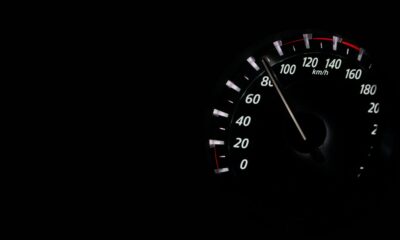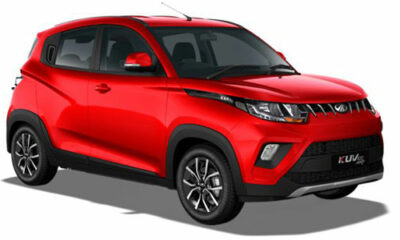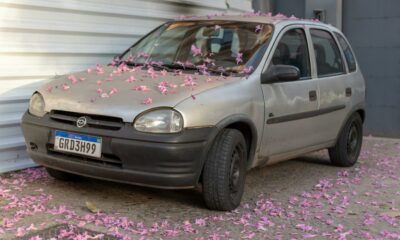Motoring
The Realist’s Guide to Finding Reliable Used Cars Below 30000 in South Africa

Let’s be honest from the start: the market for used cars below 30000 is the automotive wild west of South Africa. It’s a sector filled with both incredible opportunity and significant risk. For many, a car at this price isn’t a luxury; it’s a vital lifeline to work, school, and opportunity.
So, is it truly possible to find a reliable runner for under R30,000? The answer is a cautious yes, but it requires more than just luck. It demands patience, sharp knowledge, and a healthy dose of caution. This isn’t a guide to finding a perfect car; it’s a survival guide for finding a functional one that won’t leave you stranded.
In This Guide:
- The Reality Check: What to Expect for R30,000
- The Golden Models: Your Best Bets for Reliability
- The Non-Negotiable Pre-Purchase Checklist
- Your Next Steps: Where to Look and What to Do
The Reality Check: What to Expect for R30,000
Before you scroll through a single listing for used cars below 30000, you must adjust your expectations. At this price point, you are not buying a car; you are adopting a project. Your goal is to find the project you are willing and able to manage.
What You CAN Expect:
- Age & Mileage: Cars from the early 2000s (or older) with 200,000+ km on the clock.
- Cosmetic Issues: Dents, scratches, and faded paint are standard. See them as a badge of honour.
- Basic Features: Aircon is a luxury. Power steering is a bonus. Focus on mechanical integrity over everything else.
What You CAN’T Expect:
- Modern safety features like multiple airbags or ABS.
- A smooth, quiet, or comfortable ride.
- Any form of warranty or guarantee from a private seller.
The Golden Models: Your Best Bets for Reliability
In this budget range, you cannot afford to be fashionable. You must be smart. Stick to simple, over-engineered, and locally popular models where parts are dirt-cheap and every mechanic knows how to fix them.
The “Gold Standard” Champions
1. Toyota Tazz / Conquest (1996-2006)
The undisputed king of the R30k market. Its 1.3-litre engine is virtually unbreakable, and you can find parts for it anywhere, for almost nothing. It’s the default choice for a reason.
What to check for: Rust in the wheel arches and door sills, worn suspension bushes, and listen for timing chain rattle.
2. Volkswagen Citi Golf (1984-2009)
A South African legend. Its simplicity is its greatest strength. It’s mechanical, easy to diagnose, and easy to repair. A well-maintained Citi Golf is a treasure.
What to check for: Rust is its main enemy (check the floor pans and fenders). Also, look for oil leaks and worn gearboxes.
3. Ford Bantam (1983-2011)
The perfect choice if you need utility. This small bakkie offers practicality that few cars can match at this price. It’s a workhorse through and through.
What to check for: Rust in the load bay, a worn-out clutch, and general neglect from being used as a tool.
The “Proceed with Caution” List
- Opel Corsa Lite / Utility: Generally robust, but parts can be slightly more expensive than for a Tazz.
- Nissan 1400 Bakkie: An iconic workhorse, but finding one that isn’t rusted through is a challenge.
The Non-Negotiable Pre-Purchase Checklist
This checklist could save you from a R30,000 paperweight. At this price, a professional inspection is worth its weight in gold. If you can’t do that, be your own ruthless inspector.
Step 1: Paperwork is Paramount
Do not even consider a test drive without checking these first.
- Is the car licensed? An expired license disc is a major red flag for a neglected car.
- Does the VIN on the license disc match the car’s chassis number? (Found stamped on the firewall in the engine bay). If not, walk away immediately.
- Is there a valid Roadworthy Certificate? Without it, you cannot legally transfer the car into your name. This is a deal-breaker.
Step 2: The Mechanical “Deal-Breaker” Test
This is where you separate the runners from the scrap metal.
- Cold Start: Insist on starting the car when the engine is completely cold. Listen for excessive knocking, tapping, or blue smoke from the exhaust.
- The Oil Cap Check: With the engine off, remove the oil filler cap. Look for a white, mayonnaise-like substance. This indicates a blown head gasketwalk away immediately.
- Gearbox Test: Test every single gear, including reverse. The shift should be relatively smooth, not notchy or grinding.
- Listen Carefully: Drive with the radio off. Listen for whines from wheel bearings, knocks from the suspension over bumps, and rattles from the exhaust.
The “Voetstoots” Trap: All used cars are sold “as is.” Assume everything is broken. A powerful question to ask the seller is: “What will I need to fix on this car in the first month?” Their reaction will tell you everything.
Your Next Steps: Where to Look and What to Do
Finding good used cars below 30000 is a numbers game. You must be prepared to look at many cars and walk away from most of them.
Where to Search
- Online Marketplaces: Search specifically for “used cars below 30000” on platforms like Facebook Marketplace, Gumtree, and Cars.co.za. Be wary of deals that seem too good to be true.
- Local Classifieds: Community newspapers can sometimes have hidden gems from older sellers who have looked after their cars.
- Word of Mouth: Tell everyone you know you’re looking. A car from a trusted contact is always less risky.
The Final Word
The hunt for used cars below 30000 is a gamble. Your best defense is knowledge. Stick to the proven champions, trust the checklist, be prepared to walk away, and always, always budget an extra R3,000 – R5,000 for immediate, essential repairs like new tyres, brakes, or a service.
With patience and a sharp eye, you can find a car that, while not perfect, will faithfully serve its purpose and give you the freedom you need.
Found this guide helpful? Share it with a friend who’s on the hunt for a budget car.
Click here for more Motoring News
Follow Carmag on Instagram and Facebook
Click here to browse Cheap Cars for sale



























